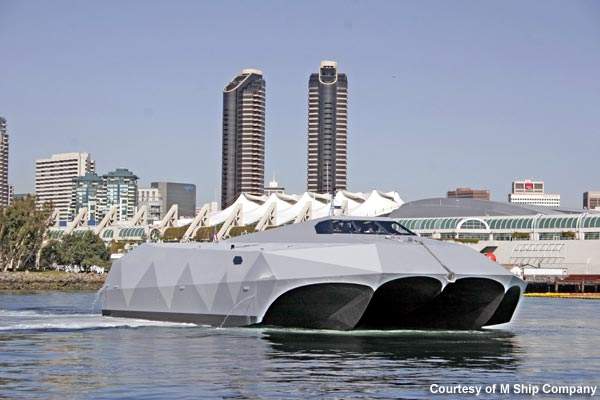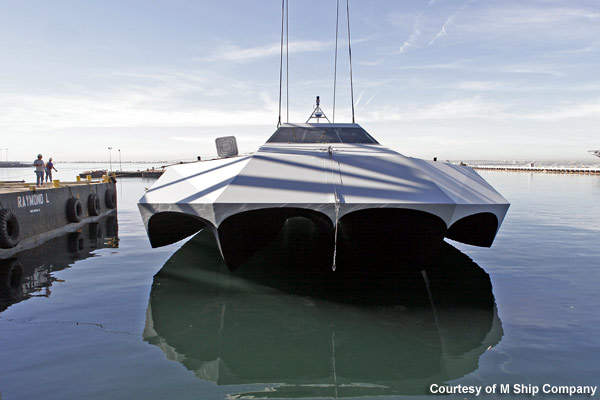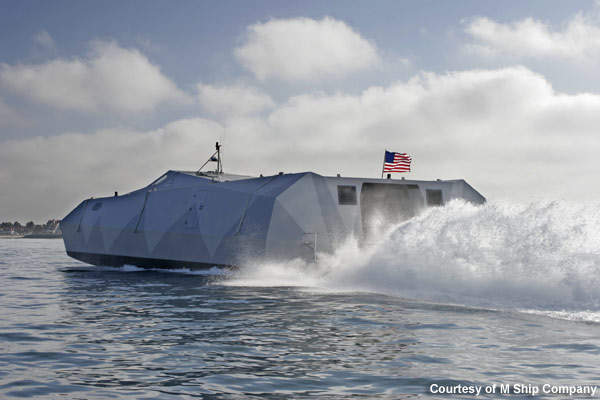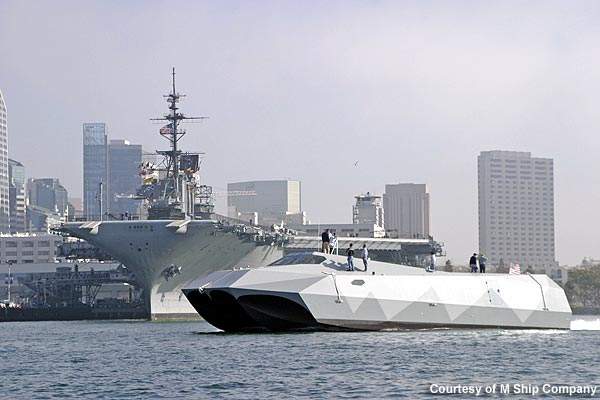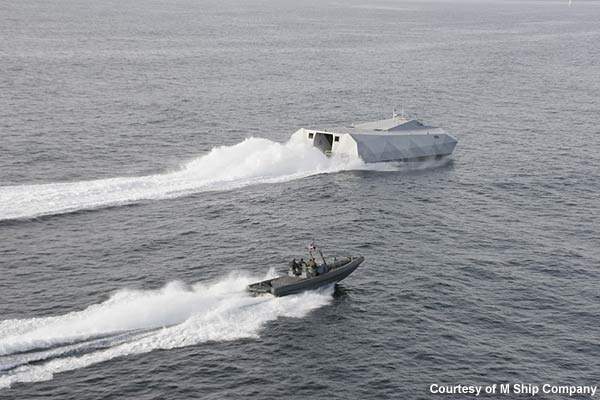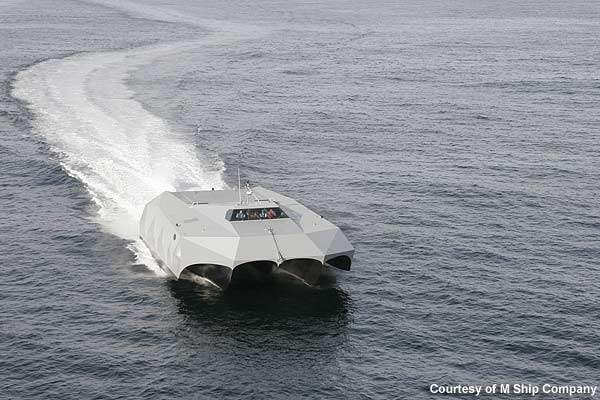The M80 Stiletto is a prototype naval ship manufactured by the M Ship Company, to meet specific requirements of the Pentagon’s Office of Force Transformation. M80 Stiletto represents the next generation of military vessels.
It is built with new carbon-fibre materials and has a networked architecture. It is unique for its hull design, speed, ride quality, payload capability and provision for unmanned vehicle support.
M80 Stiletto littoral and near-shore field trials
The US Department of Defense is now conducting field trials of M80 Stiletto. The vessel has participated in Trident Warrior joint-force exercises off the California coast. When deployed at Colombia to help in fighting the US war on drugs, its operations in shallow-water drug interdiction resulted in capture of 1,800lb of cocaine.
The M80 Stiletto was developed for high-speed military missions in shallow, littoral and near-shore waters. The vessel aims to realise Vice Admiral Arthur Cebrowski’s vision of a ‘brown-water navy’ for expeditionary combat in the 21st century.
Twin M-hull technology
The M80 Stiletto is a twin-M-hull vessel. It is 88ft in length with a 40ft beam, providing a rectangular deck area. When fully loaded the vessel’s draught is 3ft. The M80 Stiletto can reach speeds of 50kt to 60kt. The vessel creates an air cushion by recapturing the bow wave and using its energy. This technology offers less drag and hence greater operational efficiency.
The vessel is built on the advanced M-hull technology. Its carbon-fibre body ensures reduced weight and increased stiffness. M80 Stiletto was introduced to Pentagon’s Office of Force Transformation as part of the scalability process of the M-hull technology.
The US government and its military agencies may purchase M80 Stiletto and other prototypes from M Ship Company on the basis of no-bid and sole-source acquisition contract.
The M80 can withstand the rigours and abuse of a wartime environment. A blend of fibres and specially formulated resins make it rugged and tough.
The hull of the M80 vessels does not require foils or lifting devices to achieve a smooth ride at high speed or in rough conditions. Its shallow draft allows it to operate in littoral and riverine environments and potentially allows for beach landings.
M-hull design features
The M-hull design has numerous advantages over the conventional craft. The high lift-to-drag ratio for efficient propulsion eliminates the hull speed limit of conventional displacement craft.
The simple hull form allows carbon-fibre construction avoiding the costly infrastructure requirements. Fleet costs are also reduced based on higher reliability of construction, and operation and maintenance without dependence on mechanical lifting vanes or air fans. The overall profile of the vessel is reduced by lowering the decks, enhancing the potential for radar and visual stealth, and allowing launching and retrieval of satellite craft while underway.
M80 performance
The M80 Stiletto provides a stable platform for weapon launching at any speed, based on air lift in outboard planning tunnels. It is also capable of a high-speed tight flat 360° turn with less than 10% loss of vessel speed.
In rough water the fine entry bow generates an increased bow wave on contacting chop. This impacts on the ceiling of the planning tunnels, cushioning the downward movement of the bow. The bow wave is eliminated at all speeds protecting shore-based structures.

